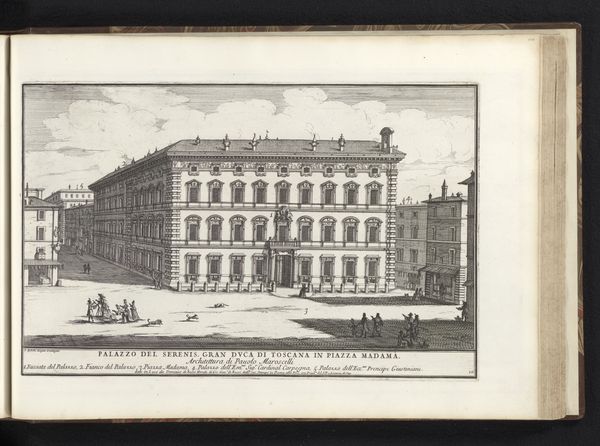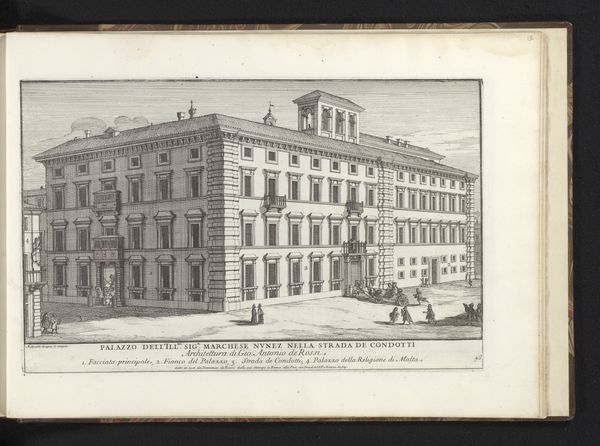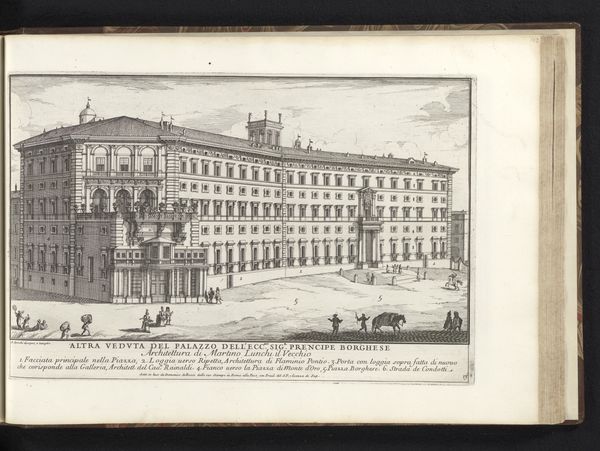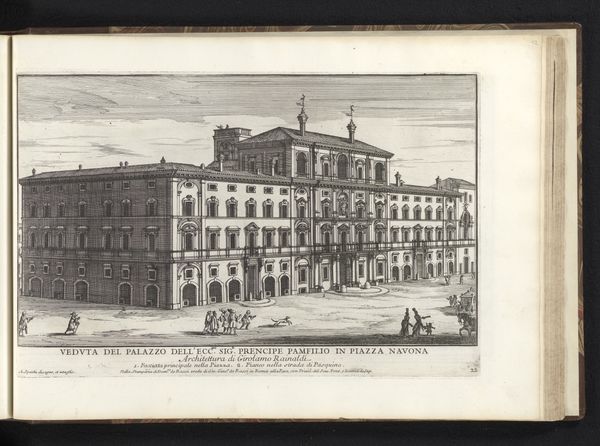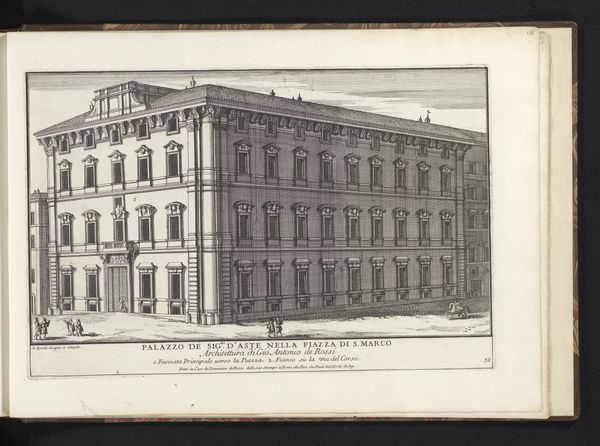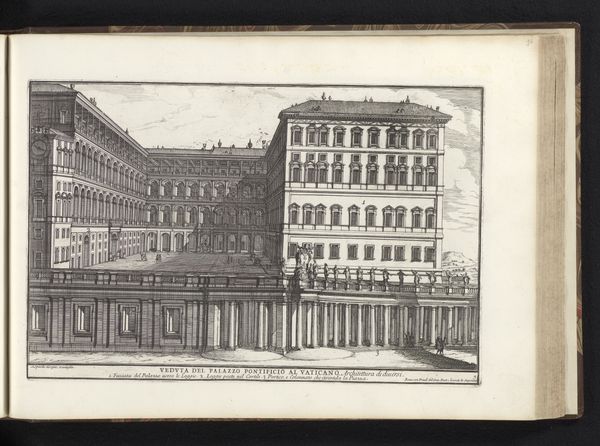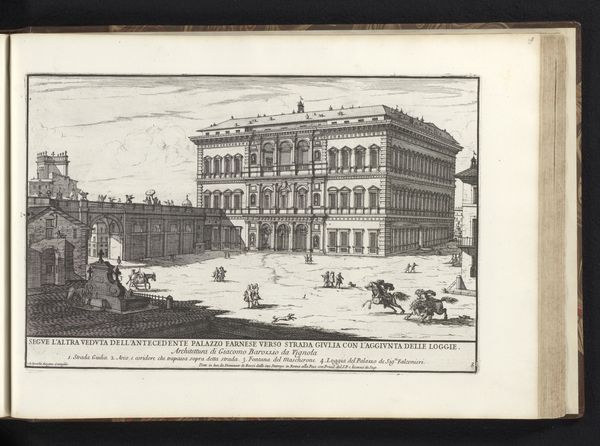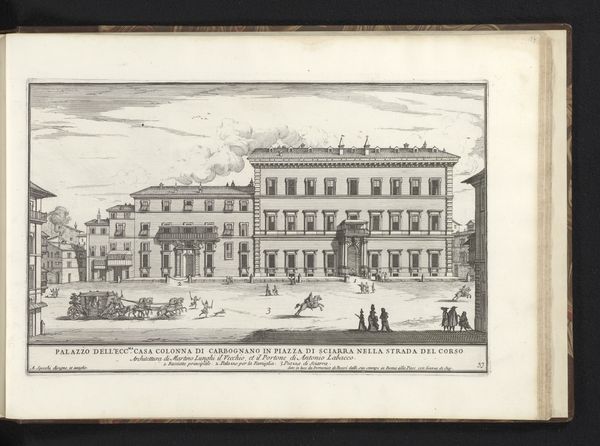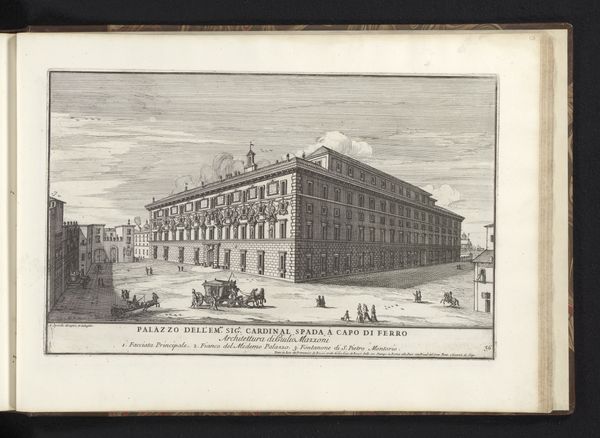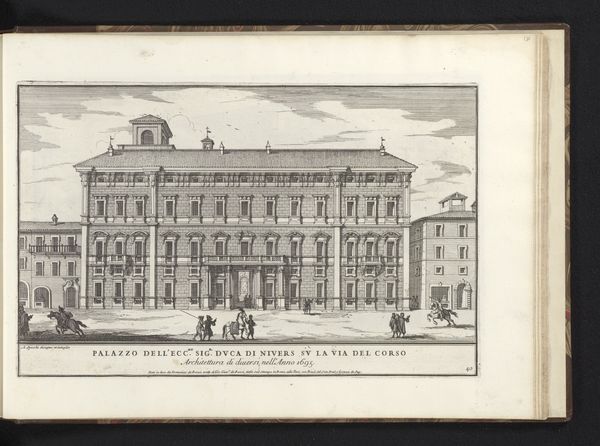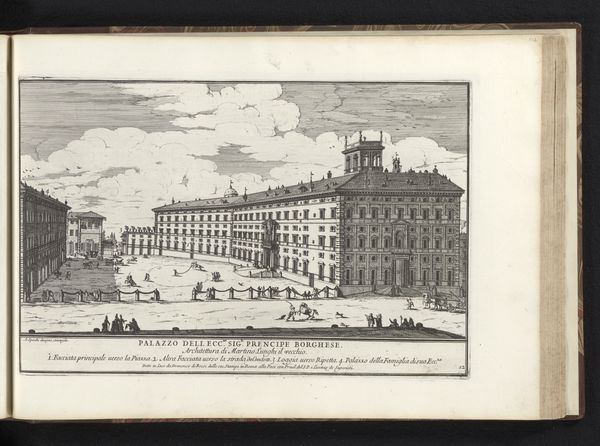
print, engraving, architecture
#
baroque
# print
#
line
#
cityscape
#
history-painting
#
engraving
#
architecture
#
realism
Dimensions: height 221 mm, width 335 mm
Copyright: Rijks Museum: Open Domain
Editor: This is “Palazzo Chigi te Rome,” an engraving by Alessandro Specchi, created in 1699. It feels very precise and documentary-like. The stark lines emphasize the grandeur of the building, but it also feels a little sterile. What do you see in this piece? Curator: Well, it's fascinating to consider this engraving in terms of its production. Think about the labor involved in creating those precise lines on the plate. Each line, each mark, meticulously carved to represent this powerful symbol of Roman aristocracy. The engraving isn't just a depiction, it's an object made with intention reflecting consumption and display of power. Editor: That’s an interesting point. So, you’re focusing on the ‘making’ of the artwork as much as the ‘what’ of the artwork. Curator: Precisely! Look at the choice of architecture as the subject. It speaks volumes about the economic resources required to commission and build such a grand palazzo, and furthermore, to have it documented and disseminated through prints like this. This wasn't simply about aesthetics; it was about projecting power, controlling narrative, using materials – stone and ink, steel and paper – to establish dominance. Do you see how the medium and subject are deeply entwined with material circumstances? Editor: I think so. So the very act of creating and distributing this print solidifies the Chigi family's status? Curator: Exactly! It’s about understanding art not just as an image, but as a product of labour, resources, and societal power structures. It reveals a network of makers, patrons and the raw materials that constituted that social class. Editor: I never really thought about it that way, the relationship between the materials, process, and what is portrayed! Curator: It gives us a new way to decode this cityscape.
Comments
No comments
Be the first to comment and join the conversation on the ultimate creative platform.
